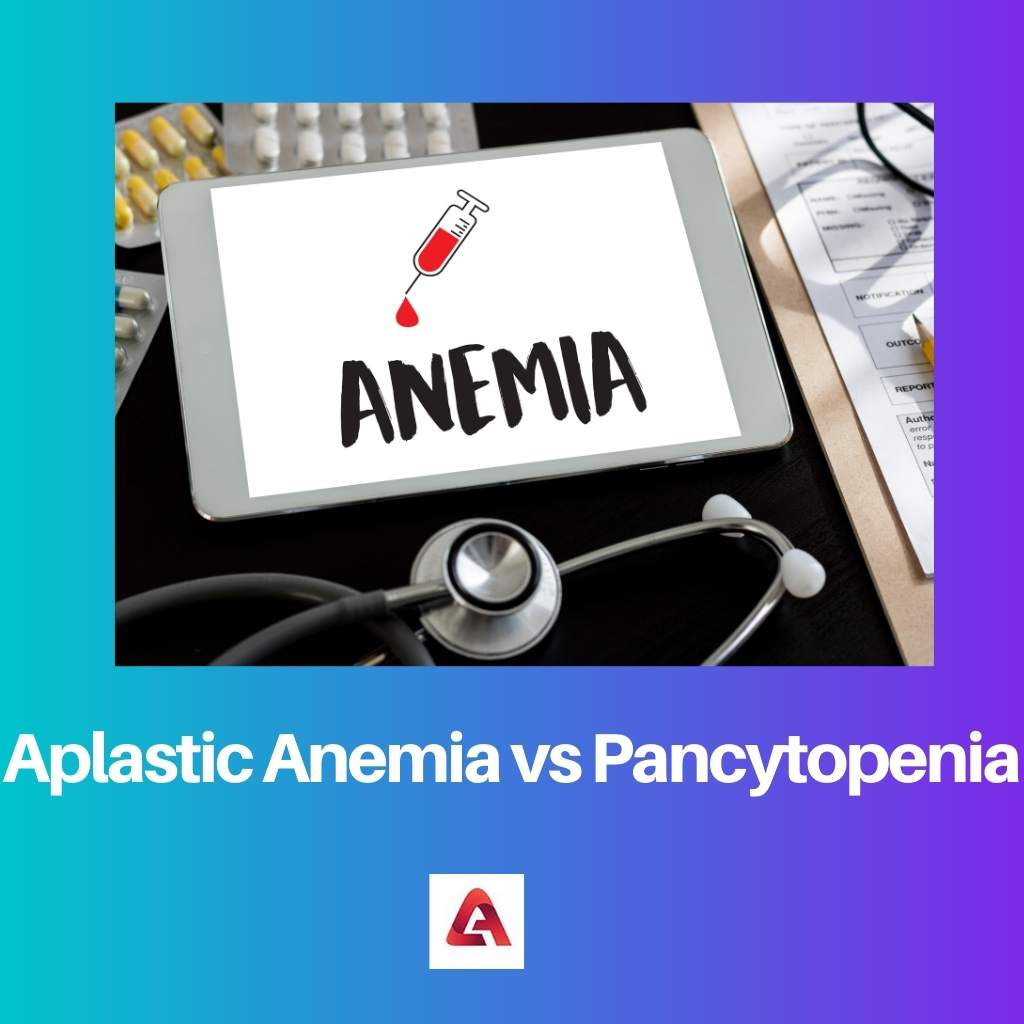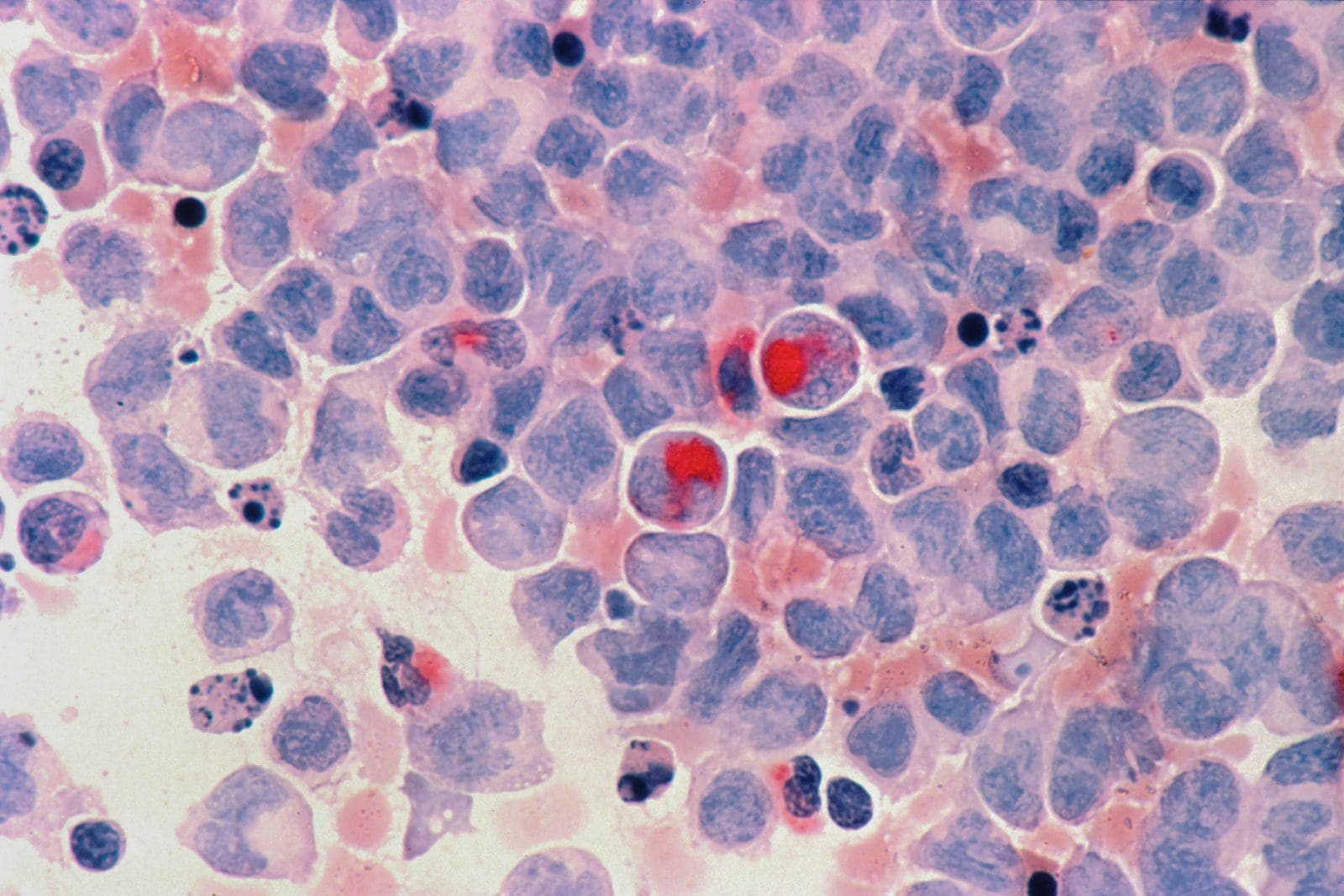Medical science is a wide term and complex too. You all may hear about bone marrow, which is responsible for the production of blood cells.
Aplastic anaemia and pancytopenia these terms are used in medical science to explain two different conditions. The symptoms are quite similar, but they have a cause-and-effect relationship with each other.
Key Takeaways
- Aplastic Anemia is when the bone marrow does not produce enough blood cells, while Pancytopenia is when all types of blood cells are reduced in number.
- Aplastic Anemia can be caused by genetic factors, exposure to toxins, or certain medications, while infections, autoimmune disorders, or cancer can cause Pancytopenia.
- Treatment for both Aplastic Anemia and Pancytopenia may include blood transfusions, medication, or bone marrow transplant, depending on the underlying cause.
Aplastic Anemia vs Pancytopenia
Aplastic anaemia is a rare and serious condition in which the bone marrow fails to produce enough red blood cells, white blood cells, and platelets. Pancytopenia refers to a condition in which all three types of blood cells are deficient: red blood cells, white blood cells, and platelets.

Aplastic anaemia is a condition that affects the bone marrow, and as a result, the bone marrow ceases or puts a stop to blood cell production, decreases the cell line of the blood or results in a deficiency of blood cells. In other words, aplastic anaemia lowers the blood count in the body.
Pancytopenia is a condition mostly observed when an individual suffers from aplastic anaemia. In pancytopenia, the cell line or the cell count decrease in the blood, indicating that something serious is happening in the bone marrow.
Comparison Table
| Parameters of Comparison | Aplastic Anemia | Pancytopenia |
|---|---|---|
| What is it? | Aplastic anemia is a disorder of blood cells that harms the bone marrow and consequently ceases the formation of new blood cells. | Pancytopenia is a condition in which a person suffers a low count of blood cells. |
| Treatment | Blood transfusion, bone marrow transplant, immunosuppressant drugs, etc. | Treatment of pancytopenia depends on the cause. |
| Cause | It can be caused either by a gene defect or some triggering problem in the immune system. | It is caused due to the inability of bone marrow to make new cells in the bloodline. |
| Symptoms | Tiredness, dizziness, chest pain, infection, nose bleeding, etc. | Rashes, seizures, fast heart rate, significant blood loss, etc. |
| Affect | Aplastic anemia can cause the situation like pancytopenia. | Pancytopenia cannot cause aplastic anemia. |
What is Aplastic Anemia?
Aplastic anaemia is a disorder of the blood cells that harms or damages the bone marrow and eventually ceases the formation of new blood cells. This results in a low blood count in the body.
It is caused due to various reasons, including exposure to radiotherapy, chemotherapy, using drugs, etc. Aplastic anaemia can be categorized into two types:
- Acquired aplastic anaemia is common in young people, adults, and children and is also caused by a defect in genes.
- Inherited aplastic anaemia is quite common in adults and is caused by some triggering problem in the immune system. It could be toxic chemicals, radiation, medications, etc.
Symptoms
The Symptom of aplastic anaemia depends on the type of blood cell. Our body consists of three types of cells. This includes white blood, platelets, and red blood cells. If any of these cells is deficient or low in the blood, the symptoms will eventually differ for each.

What is Pancytopenia?
The blood cell line consists of three types of cells, including white blood cells (WBC), platelets, and red blood cells(RBC). Pancytopenia is a condition in which there is a decrement in the cell line of the blood.
It works as an indicator and an important blood finding that eventually detects something serious in the bone marrow.
Pancytopenia is not a disease but a condition that arises as a result of severe infection, aplastic anaemia, and many more, which cause low blood count.
Symptoms
Although every cell type has its specific function, its deficiency has a different effect on the body. For instance, red blood cells are considered oxygen carriers, and their deficiency will result in difficulty in breathing and fatigue. Deficiency in white blood cells causes severe infection as these cells help to fight infection.
Apart from the symptoms caused by a deficit of a particular type of cell, some additional symptoms are associated with pancytopenia, including:
– Fast heart rate
– Rashes
– Easy bruising
– Pale skin color

Main Differences Between Aplastic Anemia and Pancytopenia
- Aplastic anaemia is a disorder of the blood cells that harms or damages the bone marrow and consequently ceases the formation of new blood cells. The blood cell line consists of three types of cells, including white blood cells, platelets, and red blood cells. When the marrow is damaged, the cell count of these blood cells or a particular type of cell decreases, and this decrement is caused by aplastic anaemia. On the other hand, pancytopenia is a condition that arises due to a deficiency of blood cells or due to low blood count.
- Aplastic anaemia and pancytopenia both lead to a decrease in blood cells, but in aplastic anaemia, the bone marrow is damaged, or in other words, aplastic anaemia is the disease or the condition that arises pancytopenia. In both conditions, the symptoms are quite similar, but they have a cause-and-effect relationship with each other.
- Aplastic anemia and pancytopenia are treatable. Treatment for aplastic anemia includes blood transfusion, immunosuppressant drugs, bone marrow transplant, etc. As both of these condition results in low blood count, hence their treatment is also quite similar. The only difference is the treatment of pancytopenia depends on the cause, which results in the deficiency.
- Aplastic anemia and pancytopenia are caused by various reasons. Aplastic anemia is categorized into two types, one is raised due to gene defect, and the other is raised due to some triggering problem in the immune system. On the contrary, pancytopenia is a condition raised when the marrow is not able to new cells.
- Detecting the disease is a challenging task. Aplastic anemia can be detected or located by conducting various diagnosis tests, including bone marrow biopsy and complete blood count. On the other hand, diagnosis or detection of pancytopenia is made by conducting tests like liver profile, CBC, folic acid level, kidney profile, etc.

Both aplastic anemia and pancytopenia are serious conditions that need proper treatment. It’s crucial to understand their causes and symptoms to be able to diagnose them accurately and effectively.
I agree, Joshua. Identifying the key differences in these conditions is essential for healthcare professionals to provide the best care to the patients.
The comparison table clearly outlines the distinctions between aplastic anemia and pancytopenia, making it easier for both medical professionals and patients to grasp the differences.
Aplastic anaemia and pancytopenia share similar symptoms but have different causes and treatments. It’s important to identify the differences to receive the right treatment.